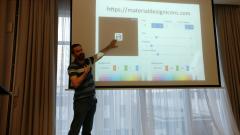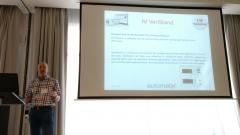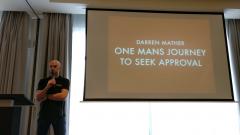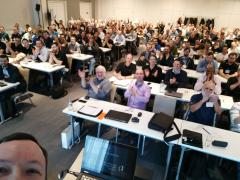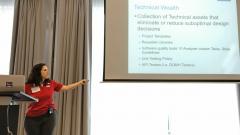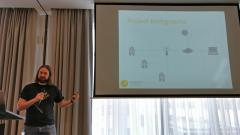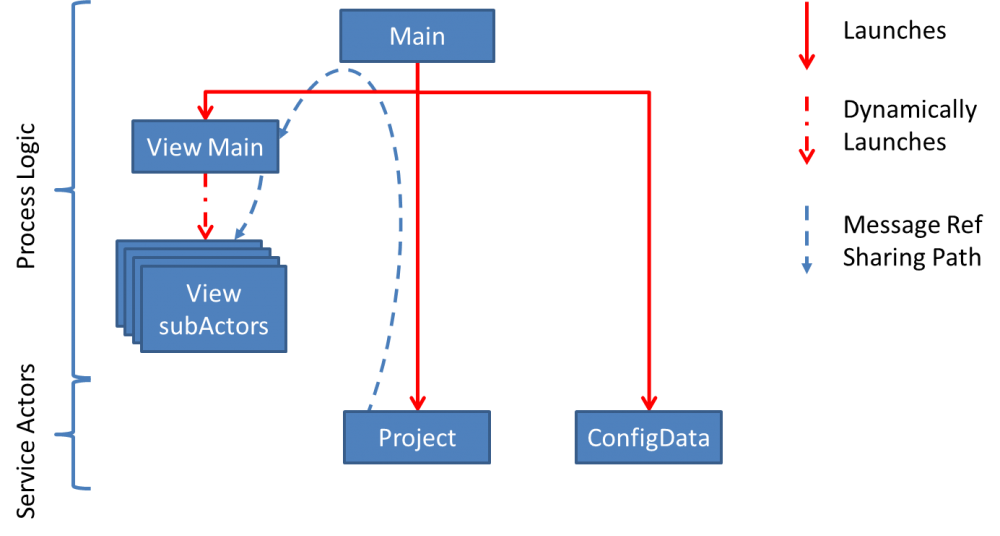-
Posts
155 -
Joined
-
Last visited
-
Days Won
3
Content Type
Profiles
Forums
Downloads
Gallery
Everything posted by Thoric
-
-
Not for me, I develop in 2014/15 so preferably keep it in 2013 if you can. What's the reason for the upgrade, there a particular feature you want to adopt that's not available in 2011? Or are you simply abandoning older LV installs on your dev machine ;-)
-

Reaction to an highly suspect Open G License breach
Thoric replied to Thoric's topic in OpenG General Discussions
Shaun is right. As a student (a long time ago) I found OpenG code very valuable and had no issues with the licensing structure. When I moved from academia to industry the terms became a problem and I justified creating my own substitute software so that I could avoid the license, but I also didn't put much effort into it so my own VIs were inferior (less well scoped/tested). As a consequence I didn't use OpenG much. Since those days I now work for a manufacturer, not a software consultancy, so I'm happy to return to using OpenG internally for my test system development. I can see how other, perhaps struggling, developers might see the opportunity to cleanse the licensing from the OpenG libraries and pass the code off as their own work to an ignorant employer. It's very shortsighted, but easy to see how they might choose to take the gamble. I've contacted the person who received the software from the outside consultancy - I'm awaiting feedback. -

Reaction to an highly suspect Open G License breach
Thoric replied to Thoric's topic in OpenG General Discussions
That's a good tack, I'll approach them directly about the situation. I have no evidence yet to indicate they were the perpetrators of the de-licensing, they may have inherited the toolkit themselves in its current form with no awareness of it's true origins. -
Today I inherited some LabVIEW code created by an external consultancy. Whilst reviewing the quality of the code I came across a series of subVIs which are indubitably OpenG VIs with the license information stripped out. One particular instance is a VI called "Variant to Header Info.vi" and the front panel is identical in layout and size to "Variant to Head Info__ogtk.vi" except the license text is missing. The VI icon is identical, and the VI description word for word. There's no doubt in my mind that this developer took the Open Toolkit, stripped all the licensing out, and is using the code in their own distribution without honouring the license agreement. Is this something I ought to follow up, or does this happen a lot these days?
-
Actually, option 1 is the option I implemented, but afterwards led to a dependency complication that made me wonder about alternatives (hence my post above). My current situation is now this: Main launches View Main, Project and ConfigData actors. View dynamically launches View subactors, as and when required. Because the View subactors require access to the Project service, I need to pass the Project actor messaging queue to both View, and then subsequently onto each View subactor. This is first conducted by Main, then by View to each subactor. The View actor provides a menu from which the operator can select, for example, "Add Data Source to Project", which causes a message to be sent to Project actor instructing that a new data source be included in the project. The path of the new data source is part of the message, so the View actor has a little bit of code (a subVI) that requests a path from the operator, performs some checks and returns the path value. One of the View subactors also has an onscreen option to add a new data source to the project. This is where I tripped up. Currently, this subactor uses the exact same subVI as View actor. The intent was for sensible reuse, but I've created a dependency link. The View actor is now sharing a resource *(subVI) with an entirely independent subView actor, and there potentially many more examples of this in the other View subactors. This makes the plugin based solution tricky, I've lost my component cohesion. It's much neater to have each actor's dependencies distinct (zero-coupling?). So I began to wonder if the subactors shouldn't be performing any work at all, and instead be passing messages up to View and have something else conduct their activities? That would mean this particular subVI is called in only one place, probably only by View actor. But that doesn't work without creating a fair bit of coupling between actors - we lose the flexibility to add new View subactors with unique functionality. So I still agree that it makes sense to pass the Project reference down to the subView actors so that they can independently get on with their duties, but I'm not sure where to put common dependencies (subVIs called by both View actor and the View subActors). If I create a library of common VIs called by multiple View-related actors (viewcommon.lvlib) how do I best ensure this linkage is honoured when building an executable? If the View subactors are distributed as built PPLs then it will draw into the PPL a copy of viewcommon.lvlib (as well 5Mb worth of Messaging framework too!). If I distribute the subactors as pure source then I think that will work as the links are rebuilt on dynamic load within the View actor, but distributing source code isn't good for control purposes. Turning the subactors into traditional llbs doesn't work (I tried - they end up broken). Sorry for the long posts. Any thoughts?
-
That's neat. My configuration implementation is different, in that I have a specific list of stats that I want to write and a service actor is responsible for controlling the values. Therefore updates are sent to it live (notifications) from the other actors. On exit (or on demand if needed) the actor saves to file. Your implementation which is entirely re-usable as there is no coupling whatsoever, mine not so much. I did however take the elements associated with file I/O and make a reusable lvlib out of those, so there's some reuse. Speaking a little more on Service Hierarchy. I came across a conundrum with my user interface sub-actors (think of them as A1 and A2 in your topology above). There is a pool of n sub-actors that the caller (A) loads dynamically from file when required and inserts their FP into it's own sub-panel. This is a plugin approach to allow feature extension by creating additional sub-actors without needing to touch the rest of the solution. And this is where my puzzle begins. Each sub-actor provides a unique view of the project data. Additional future subactors will provide new views and new functionality, as requirements are defined. Therefore, these sub-actors present an unknown to the caller (A). So caller A can handle messages that are common to all sub-actors, but it can't handle specific messages because it can't know what they are. So the way I see it, my options are: 1. Where a sub-actor (A3) needs to cause some specific action to occur, such as asking the Project actor to add a new source object with a provided path, it will have to bypass the caller (A) and directly message the Project actor. This means providing the Project actor's messaging queue to the sub-actor. However it defeats the Service Hierarchy proposal as it allows sub-actors to bypass the preferred message paths and creates hard to debug links between actors. 2. Create a generic messaging structure, probably a class hierarchy, that somehow allows caller A to receive and handle requests without knowing in advance what the content will be. This maintains the hierarchy tree and supports future messages. 3. Use sophisticated Translators in A that receive all messages from the sub-actors and parse the content to interpret their intent, following a predefined syntax, and forward requests/notifications onto other actors. This maintains the hierarchy tree and supports future messages. 4. Other? Any thoughts James?
-
So this is the option I went for. It provides the subView with a reference to the service actor, placing the subView (and it's caller View actor) above the Project service actor. This seems to work well, and I'm progressing my trial project nicely. I'm learning the power of the framework as a I go, and realised a few places where using the State Notifier instead of an Event Notifier would have been better. For some reason I thought there could only be one state notification, as compared to any number of event notifications. I think maybe I misinterpreted the intent in one of your instructional videos. Hmm. So does this not conflict with advise earlier to share the registration handle of B with A1, which is what I did, so that A1 can directly ask B for it's required info. This is working well for me, B is unaware of any other actor so it's at the bottom of the chain and cannot demand anything synchronously of any other component.
-
Another question, if I may. I have a View actor with a subpanel. It dynamically launches child actors (that I'm calling subViews) and docks them in the subpanel. Numerous subViews exist, they can be switched using controls in the View UI. View actor registers for all notifications from the subViews, as these are often requests for information, to which it can reply. When a new subView actor is loaded and launched it needs to populate it's internal data, so the Self:Initialise case includes in the list of actions "Request Project Data", a case which calls a Notify Event labelled "Request Project Data". As the View actor is listening to all notifications, it replies with a copy of the latest Project data, which the subView actor receives and stores in it's private internal shift register. The problem I have is that it appears the View actor is failing to register for the subView's notifier event messages in time to notice this "Request Project Data" notify event. I'm wondering if a caller's request to register for notifications is processed after the child actor has completed its Initialisation cases. If that's true then I have a race condition here and I need a way to ensure the child actor doesn't send the notification message until the caller has registered itself to its notifier event messages. I suspect I'll be advised to try a different approach, such as explicitly sharing the caller's message queue so that the child actor can directly post messages to its caller. Is that better, or does it have other drawbacks?
-
Another question James, this one is more academic. I'm trying to maintain zero-coupling between my actors, and in the current situation I have two independently designed actors called View and ConfigData. ConfigData stores and retrieves the application information from file, including an array of a cluster that contains two elements: the Title (string) and Path (path) of the most recently opened Projects. View actor hosts the User Interface and customises the menu to show the four most recently opened projects, stored internally as an array of Title strings. Whenever the application opens a new Project it must inform ConfigData of the project name, and if this results in a change to the arrayed list of recent projects then the revised list must be shared with View so that it can be ready to show the latest information at all times. So, there are numerous options available for sharing the revised list between ConfigData and View, but I want to maintain zero-coupling - that is, View cannot know of the existence of ConfigData, and likewise ConfigData cannot know of the existence of View. I can use the Observer-Notification registry in ConfigData actor to push updates out, and subscribe to these in View as events. But something else needs to create this binding because these actors can't know of anything outside of their simplified existence. In steps the launching actor Main. Main launches View and also ConfigData and can establish a communications link between them such that changes in ConfigData are immediately sent out on the Observer register to subscribed View. But their datatypes are different, so they can't simply pass the information between themselves because ConfigData's cluster array isn't the same as View's string array. To maintain zero-coupling I cannot simply change one of their datatypes, so there needs to be some conversion of the data somewhere between. (Actually, it probably helps in this example to consider these two actors as something much bigger, with far more complex data payloads to share. That way the simple answer to change one to match the other cannot be recommended). I see from the Messenger Library there are Translator methods, which can cause messages between actors to be mutated, and the data payload adjusted. How do you properly use these to morph the outgoing message from ConfigData into a suitable message for View? I expect that getting Main to establish this translation link will mean both View and ConfigData remain zero-coupled, and also Main doesn't have to maintain a role in the communications whenever a message is passed, which is good for performance of Main. The key for me here is: 1. View and ConfigData must remain zero-coupled (the ideal for any system of reusable actors) 2. Prevent the need for the parent actor Main to be continuously aware of and monitoring the communication path, translating the payload data each time and distracting it from it's primary duties. If I understand Translate properly, it looks to me like an excellent way to establish links between zero-coupled actors without having to establish a route through a parent actor, or any other actor. But maybe there's a better/simpler way?
-
So do I... now. Much cleaner


